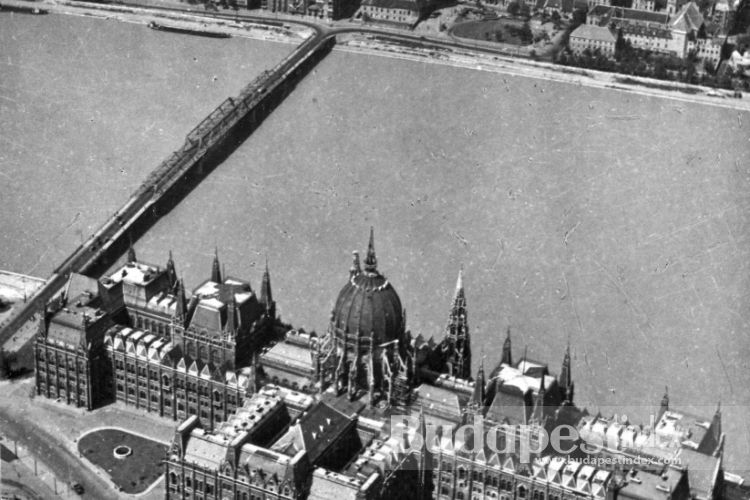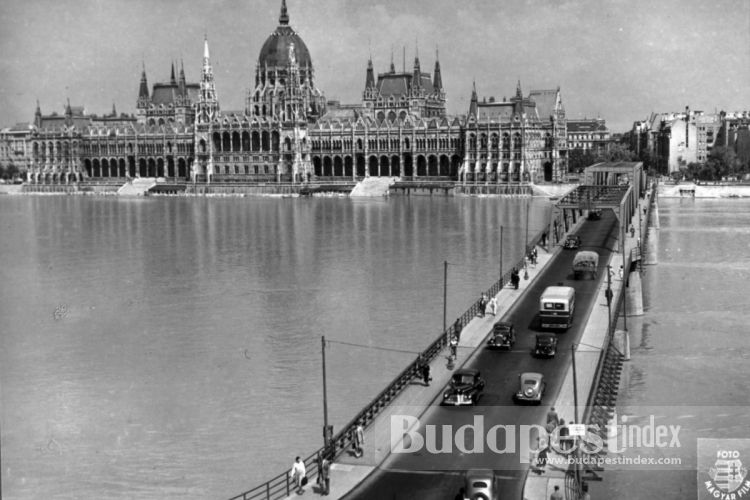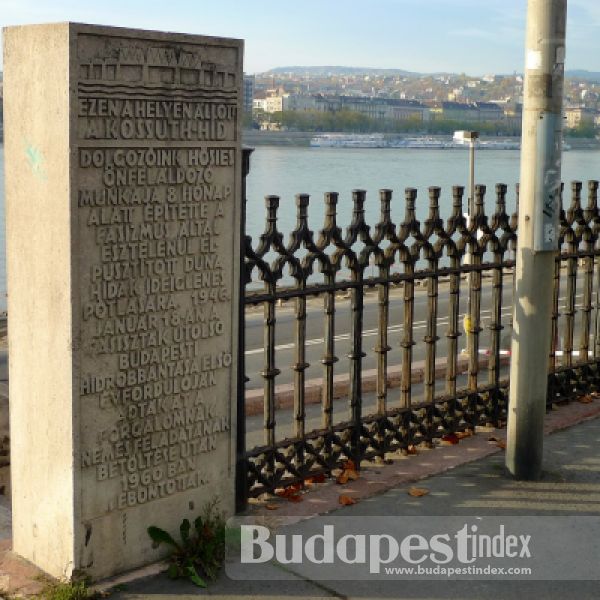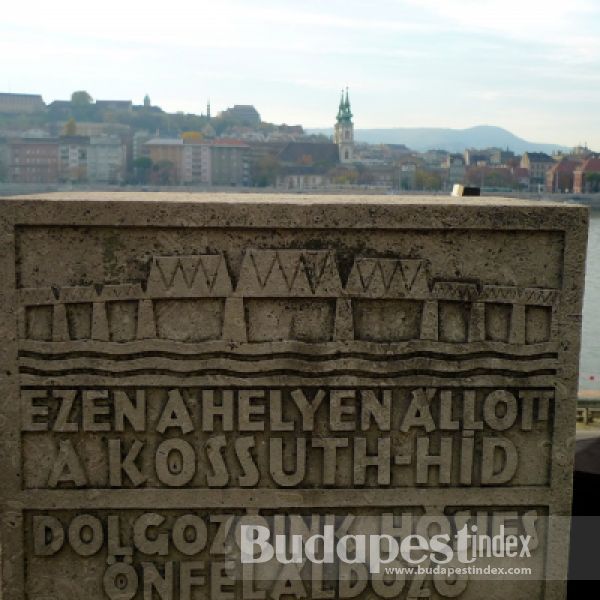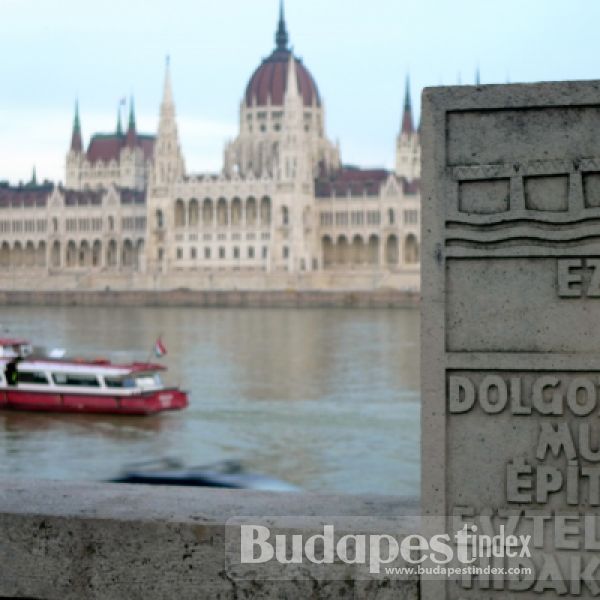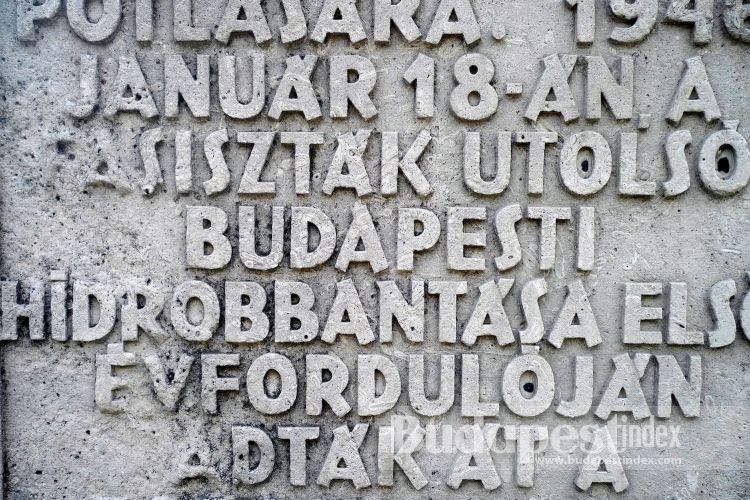
In 1945 retreating German army have blown all bridges across Danube paralysing the life of Budapest. A pontoon bridge laid soon afterwards was not enough, and at some point it couldn't be used at all because of icepacks on the Danube.
The new bridge had to be constructed swiftly, and thus Kossuth Bridge (Kossuth híd, named after leader of Hungary's 1848-49 revolution) was erected in January 1946 between Batthyány tér in Buda and Parliament building in Pest. At that time, the industry of Hungary was severely damaged, and to build the new bridge they had to use steel pipes from the oil fields in Zala county.
Although the demolished Danube bridges were mostly rebuilt in three years after the end of WWII, the Kossuth Bridge was in use till 1960, until it fall into disrepair and became a major obstacle to ships in Danube.
All that is left of it today, is footage and disputes who built the Kossuth Bridge — Soviets or Hungarians. On both sides of the Danube, in Buda and in Pest, there are two memorial plaques with the dates and outline of the bridge.
